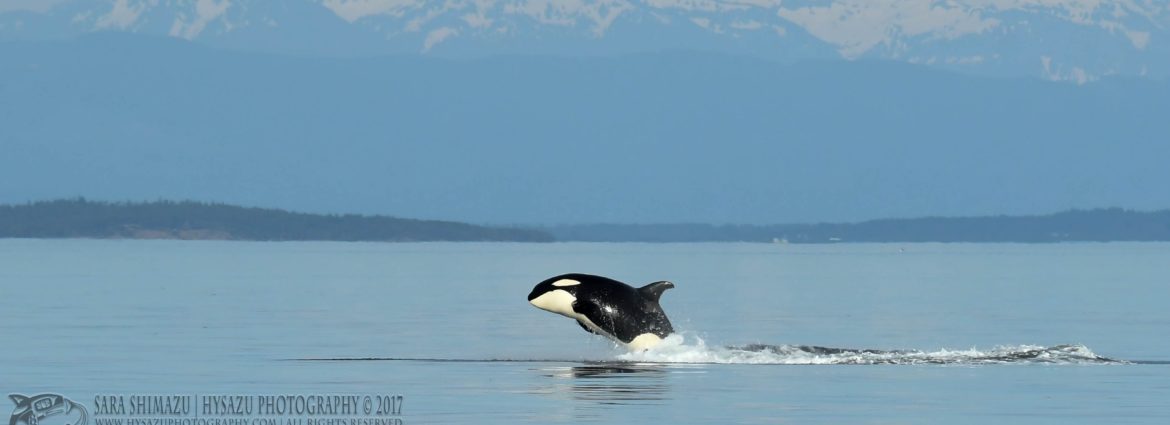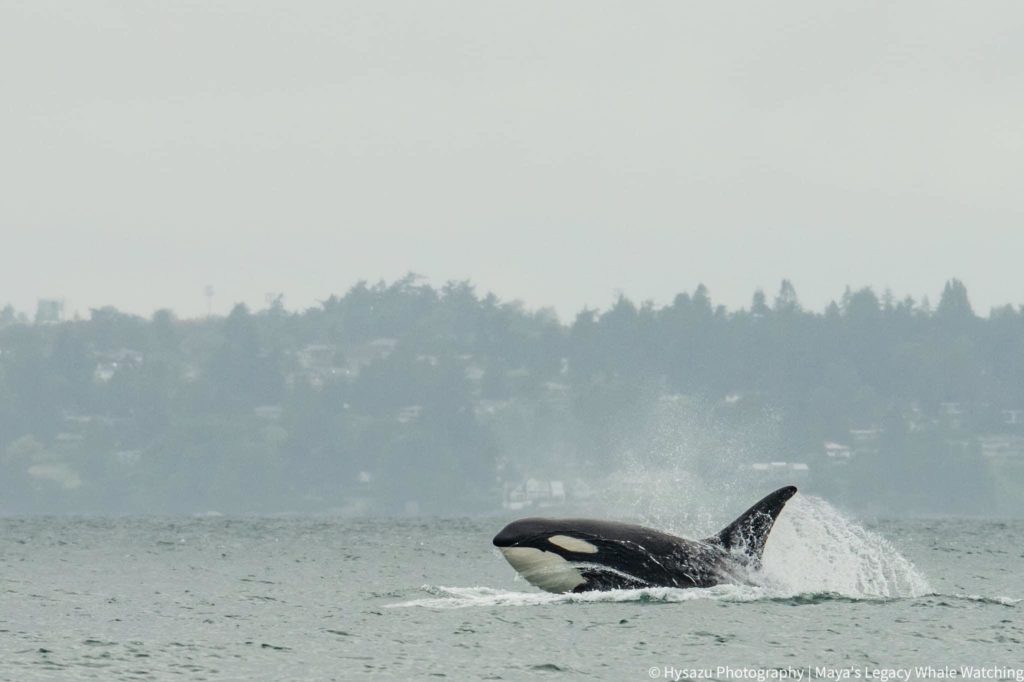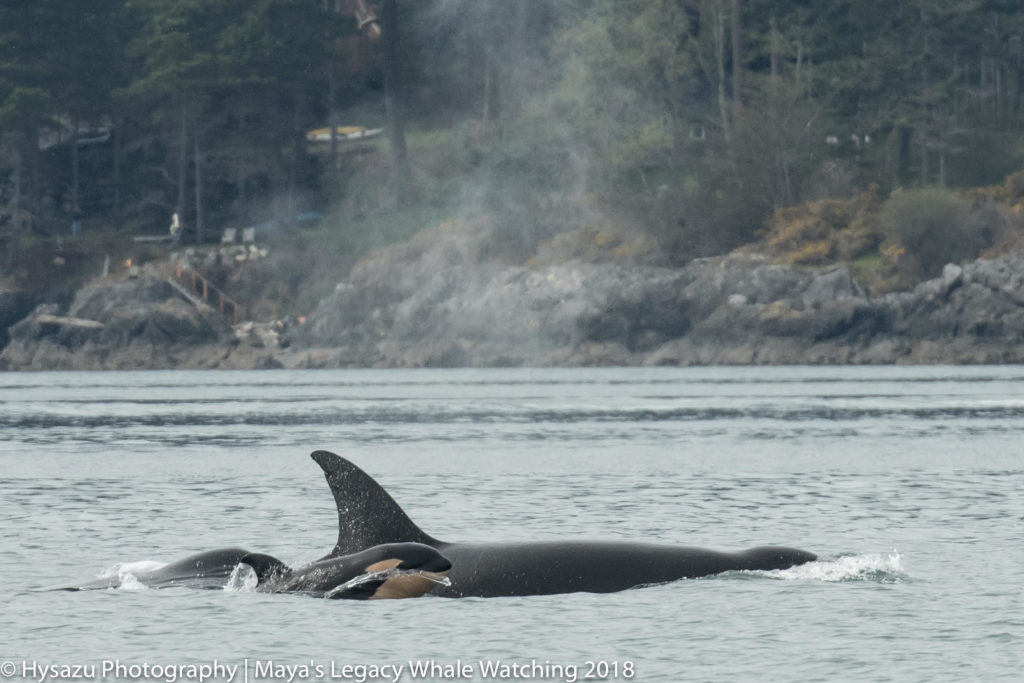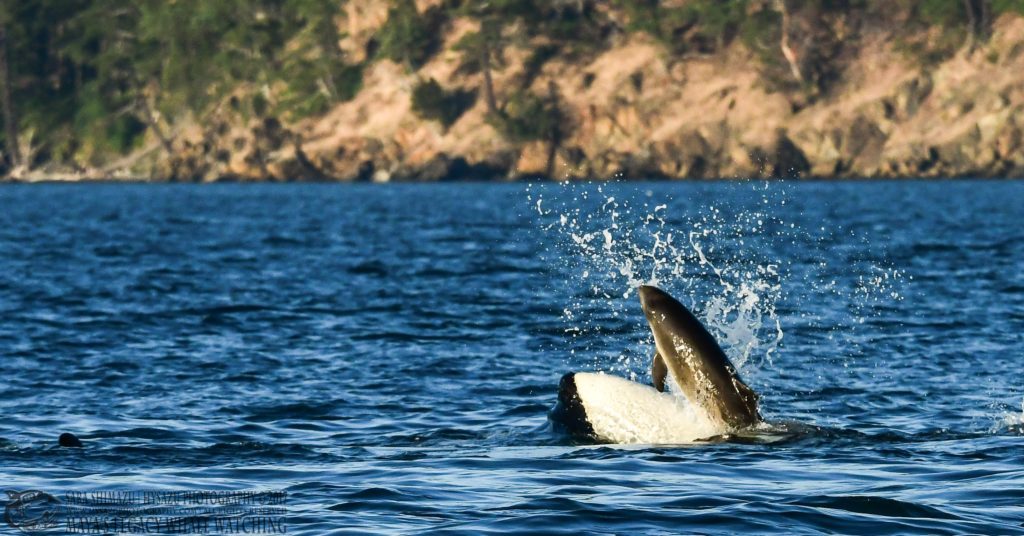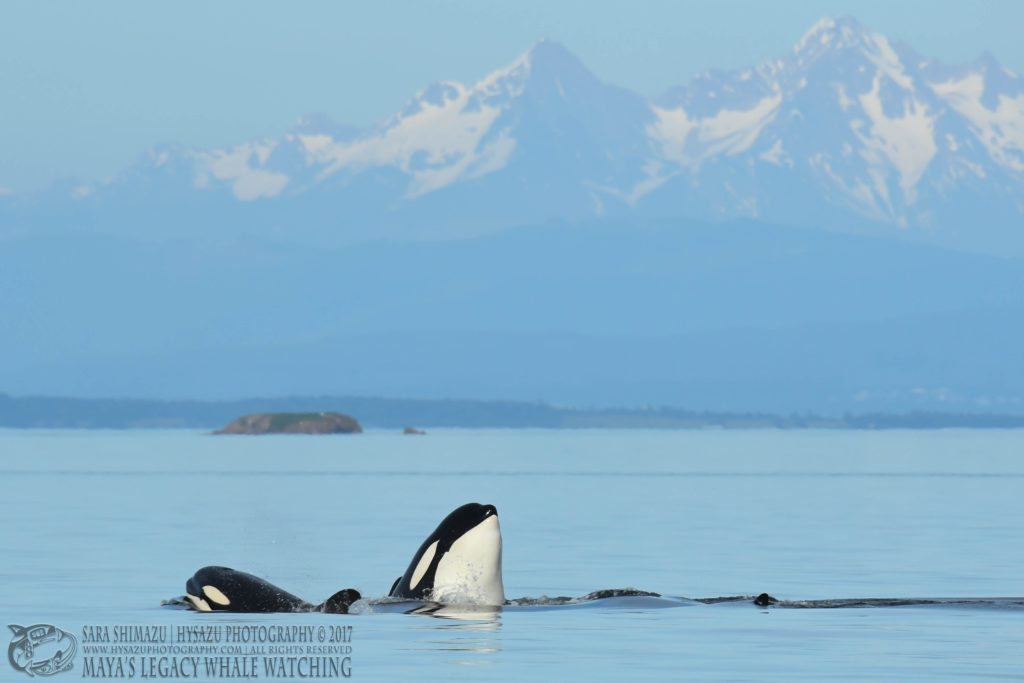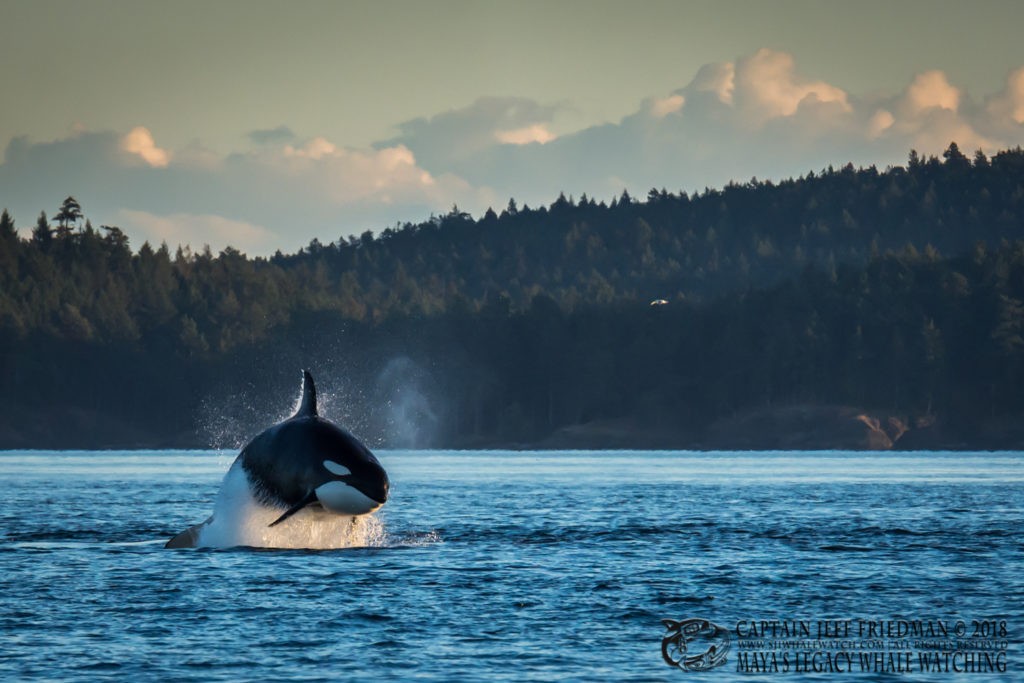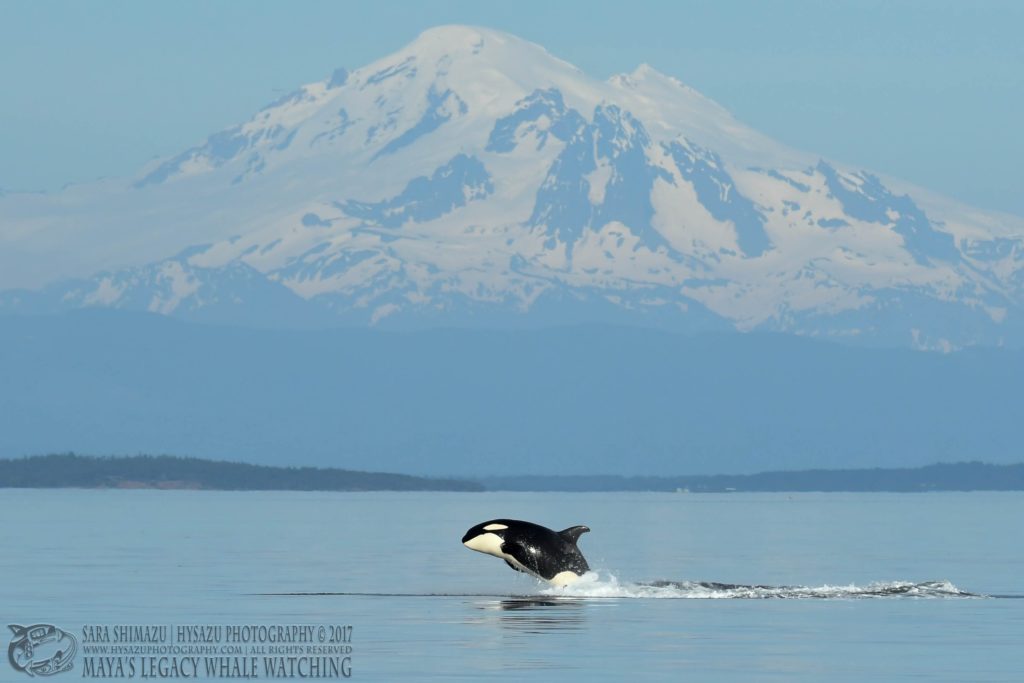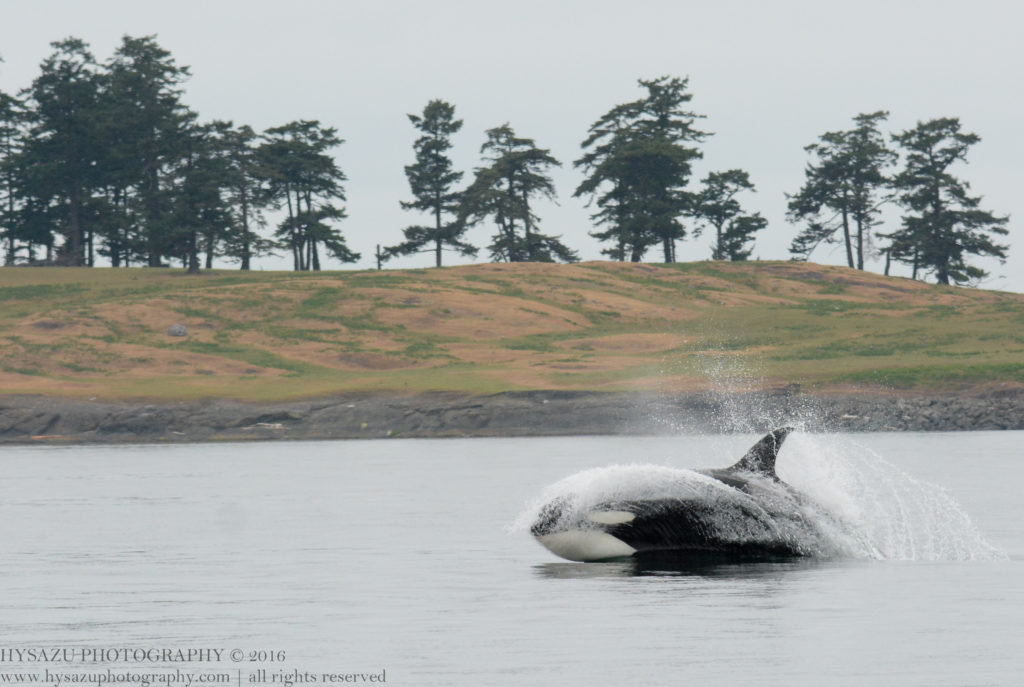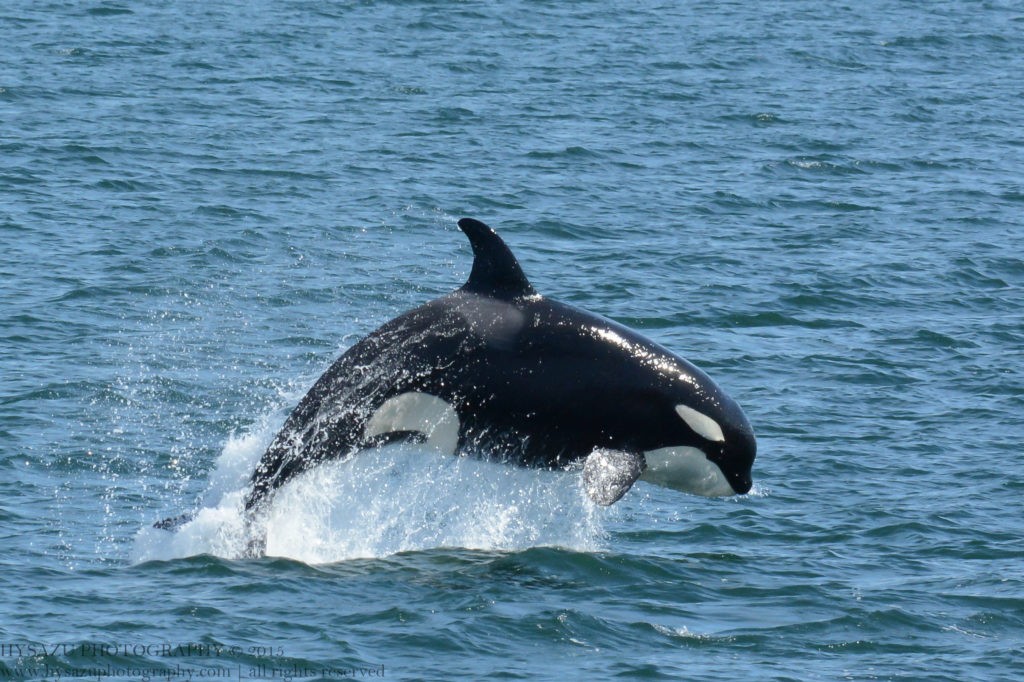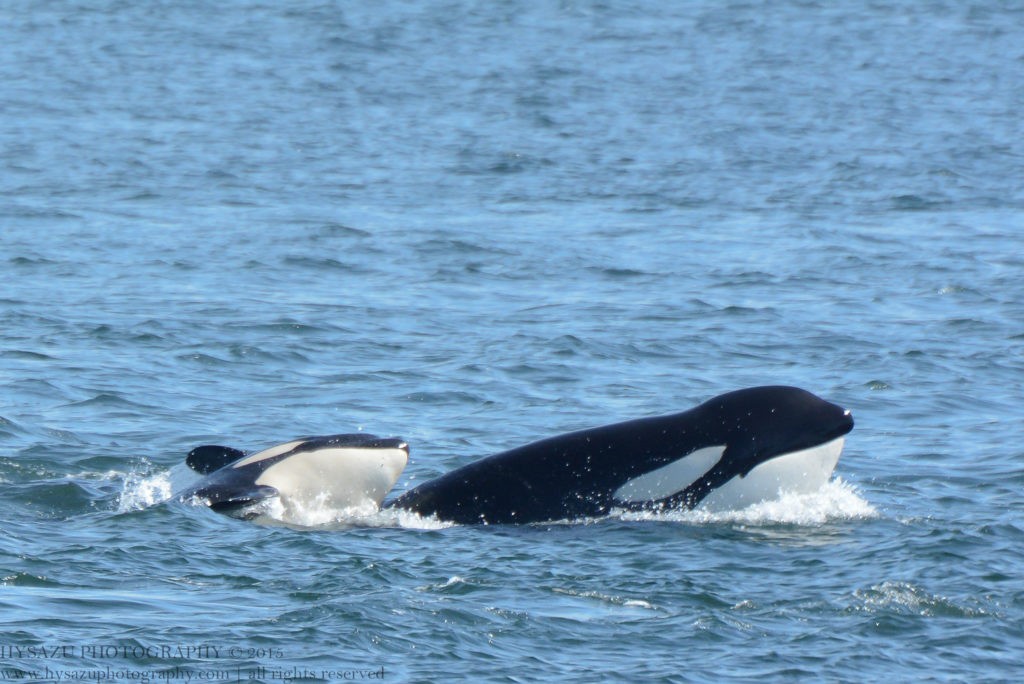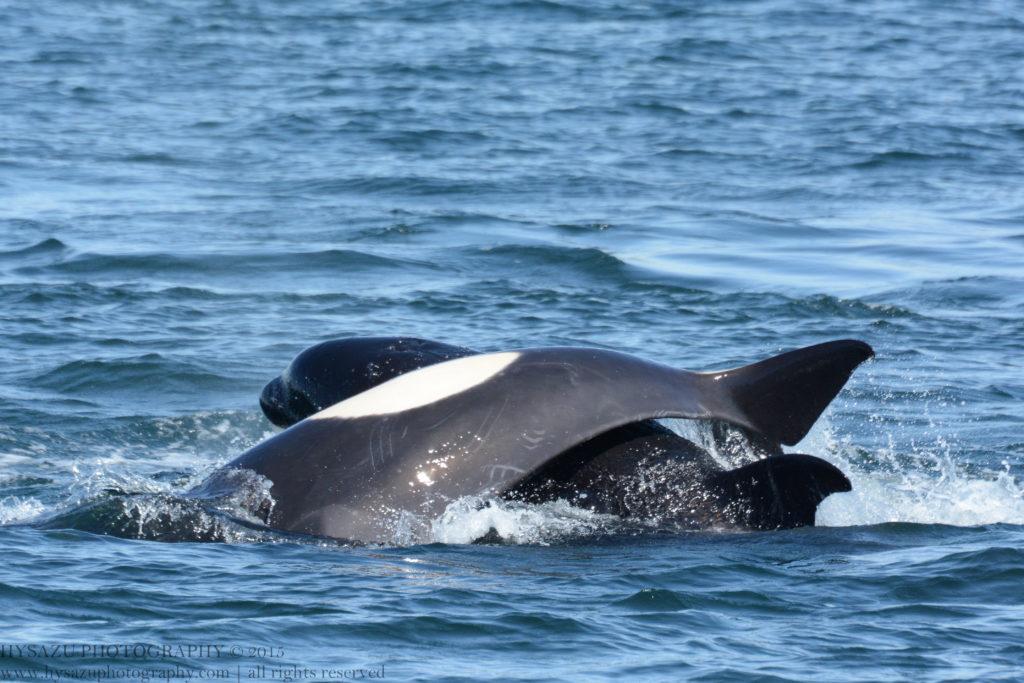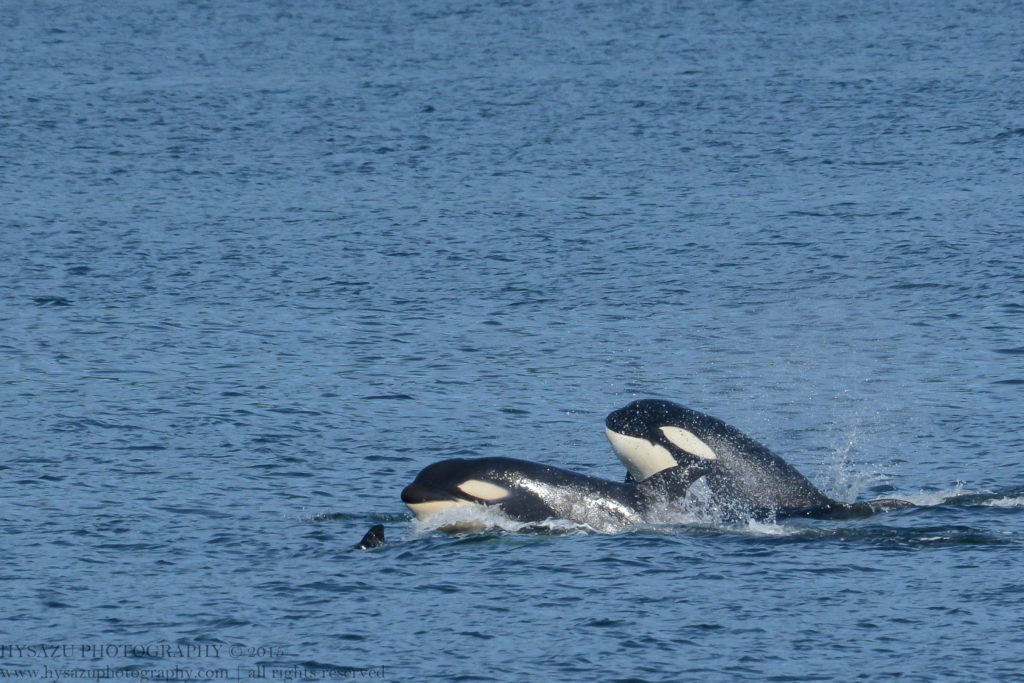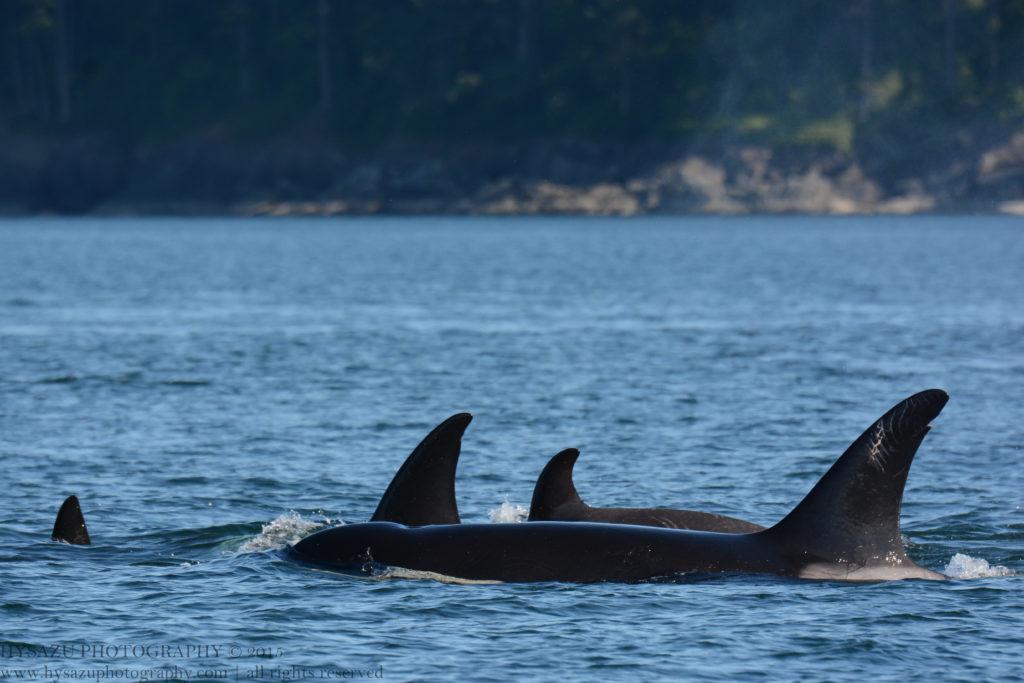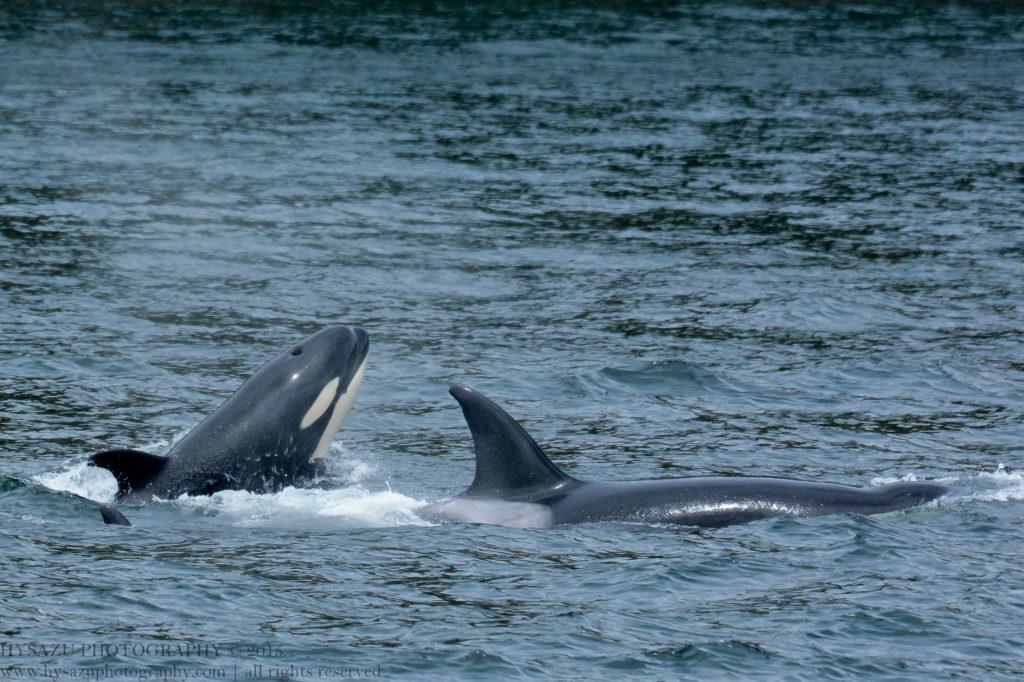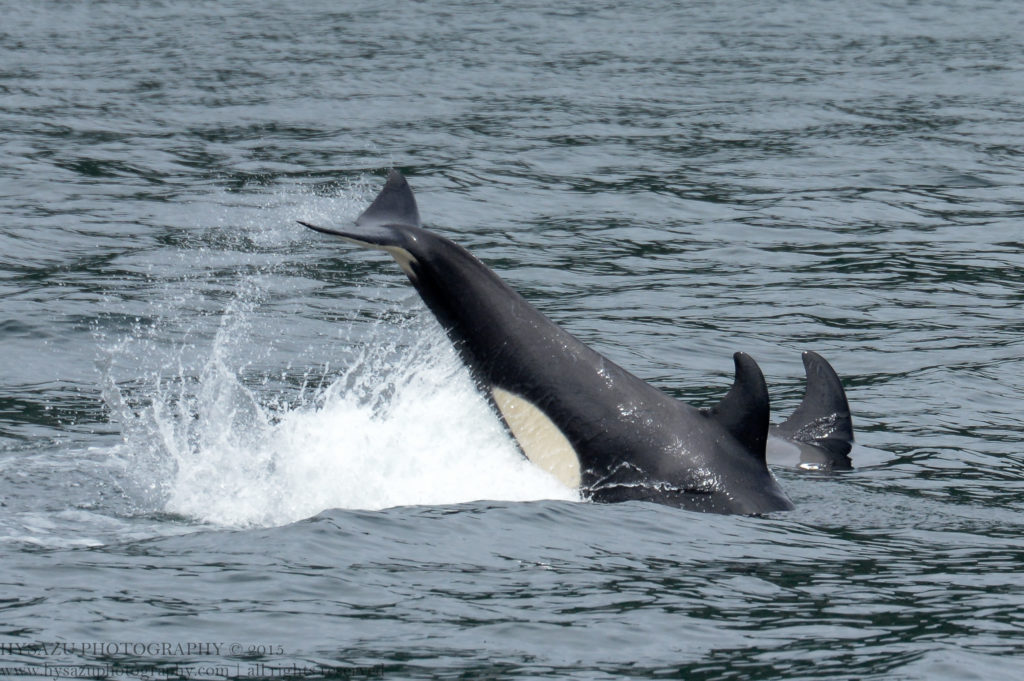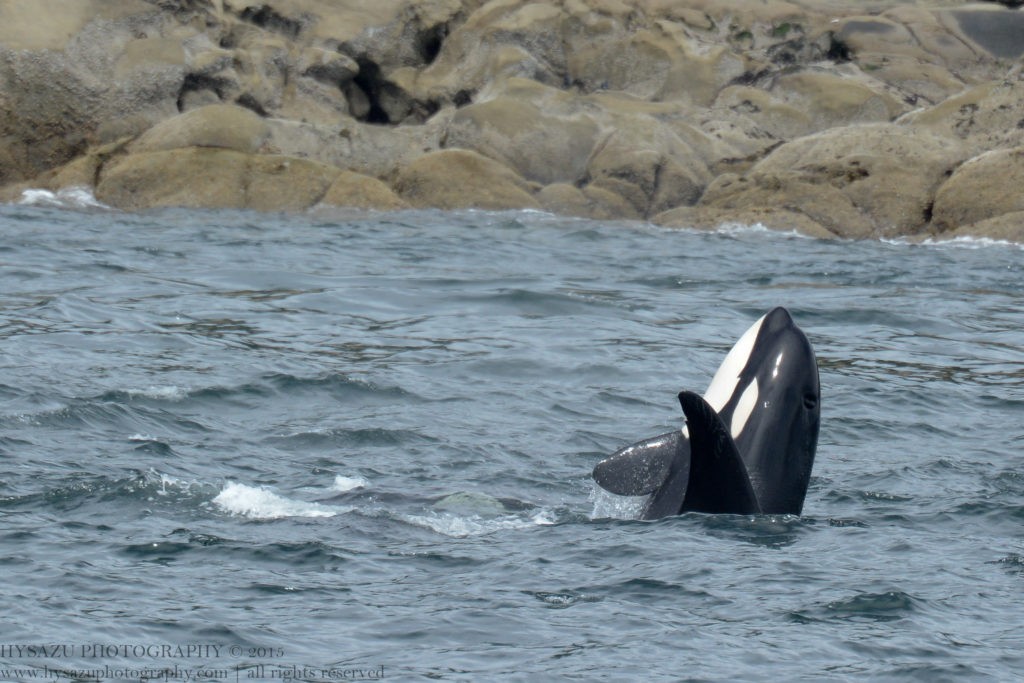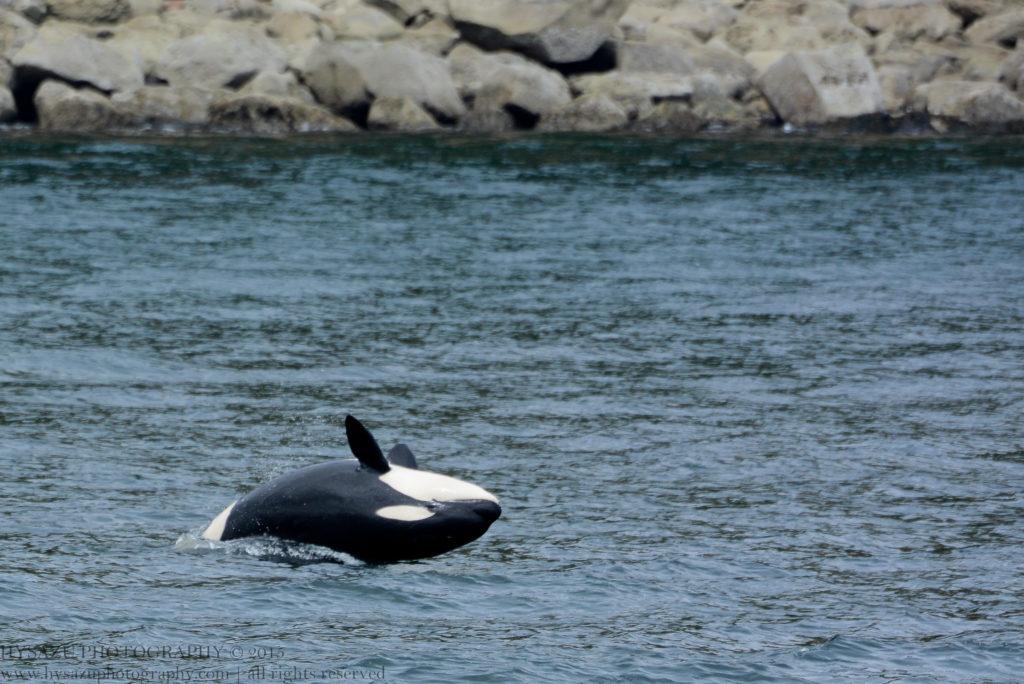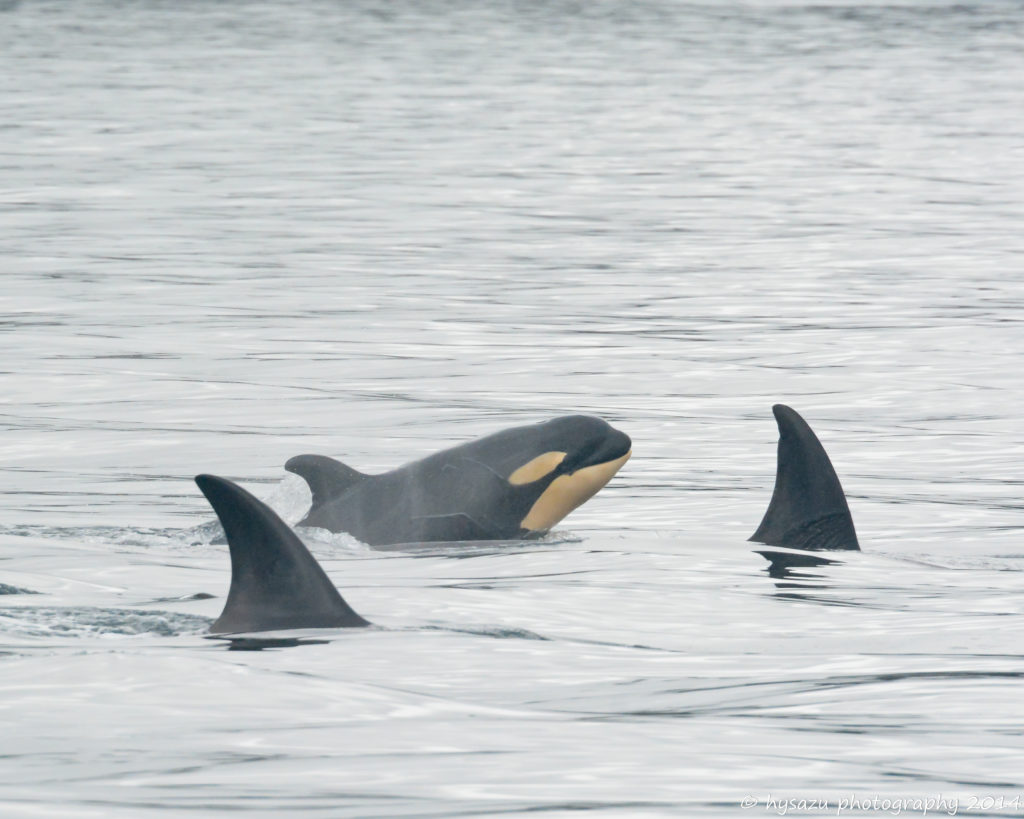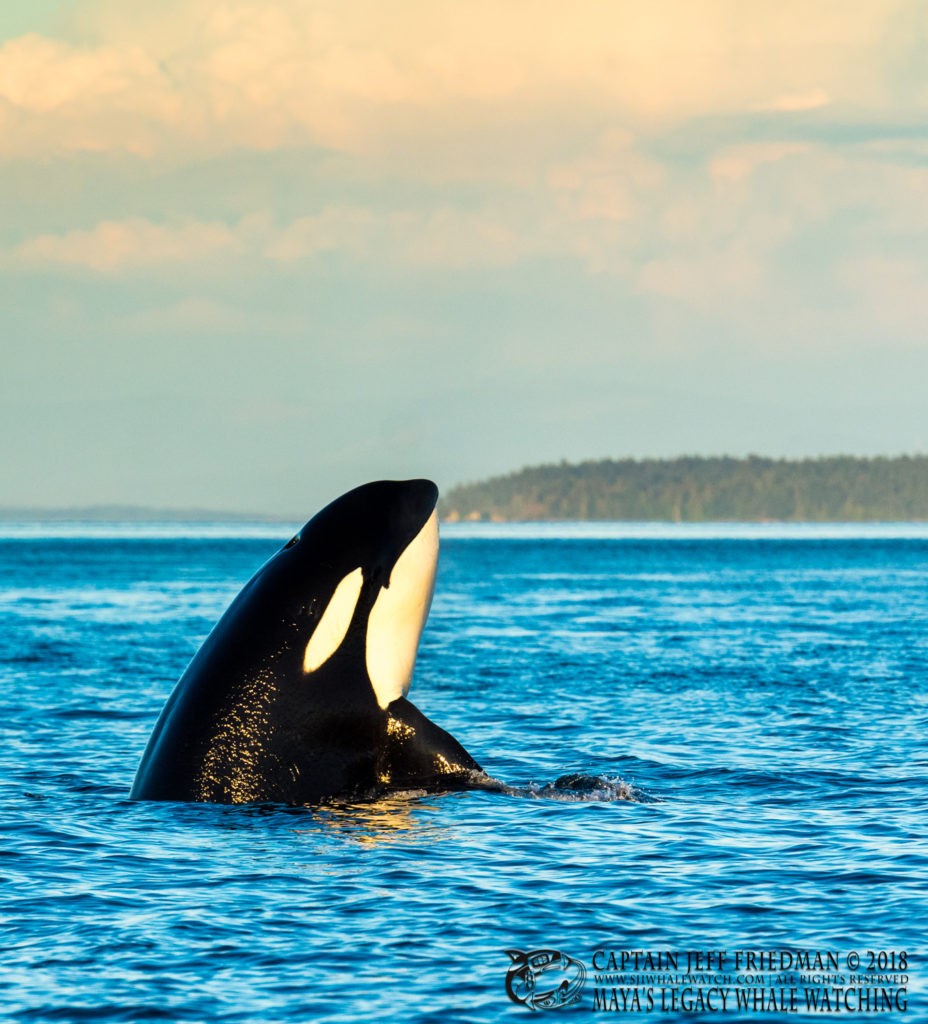
The T65A matriline is one of our favorite family groups of killer whales we encounter on our whale watching tours in the San Juan Islands. We see them often throughout the year and they have earned the reputation of being our “resident” transient orcas.
Not only does this family of whales traverse the waters surrounding the San Juan Islands, they are also seen north in the Strait of Georgia and south in Puget Sound.
Although they weren’t always so commonly encountered in the Salish Sea, we are happy they now spend so much time in our waters and that so many of our passengers get to experience this tight knit family of whales on our tours.
They are also frequently seen traveling and socializing with other unrelated matrilines of Bigg’s orcas. In 2015 they were found with a group of whales, the T125s, that hadn’t been seen in the Salish Sea in 22 years! The two families traveled together for a short while before going their separate ways. This spring, on one of our tours, we watched the T65As in a big social group that also included the T49As, T123s, and T36As!
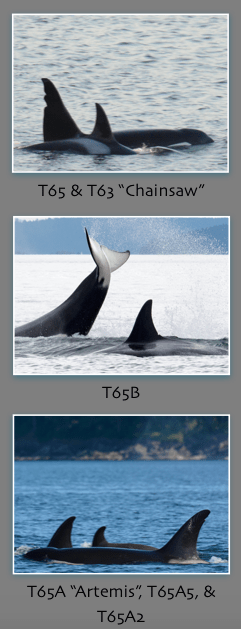 Familiar Fins
Familiar Fins
This extended family is easily recognized by the unique notches and nicks in their dorsal fins. Although orcas are often identified by their saddle patches—the gray marking behind the dorsal fin -- they can also be identified by unique scars and notches they develop on their dorsal fins.
The head of the matriline, T65A “Artemis,” was born in 1986 and travels with her five offspring. T65A has an obvious notch at the top of her dorsal fin that makes her easily recognizable. Of course, if you compare that to her presumed older brother, T63 “Chainsaw”, you would think it was nothing! T65As mother, T65, along with Chainsaw are not frequent visitors to the area but are usually seen at least once a year!
T65A’s oldest offspring is her son T65A2, born in 2004. He also has an obvious notch in his dorsal fin. As with all adolescent male orcas, T65A2’s dorsal fin is growing quite tall and because of that he is referred to as a “sprouter.”
T65A3 is also a male, born in 2007. He currently has no notches on his dorsal. Notches can change as a whale grows and ages so researchers and whale watchers alike are constantly documenting the whales they see so they can note those changes and keep track of how everyone is looking.
Although Southern Resident killer whales stay with their mothers for their entire lives, it is not uncommon in the culture of Bigg’s orcas for an individual whale to leave their family, either temporarily or for long periods of time. Interestingly, T65A3 recently left the T65As to travel with an unrelated orca (T49C), then returned to his mom and siblings after a short absence. We also observed the same behavior with T49A1 and his family, where we witnessed an orca family reunion when he returned to his family.
Both families had sons disperse temporarily prior to the arrival of a new calf. We don’t know whether that is a coincidence or if there is a reason behind it, but it illustrates that for all we know about these amazing animals, there are many more unanswered questions.
T65A4 is the daughter of T65A and was born in 2011. She is a spunky whale and is often seen next to her oldest brother, T65A2.
T65A5 was born in 2014 and was the youngest offspring of T65A until spring of 2018 when the T65As appeared in the Salish Sea with a brand-new calf, T65A6.
We have had a few tours already this spring fortunate enough to see the T65As with the calf, T65A6. We are hoping to see a lot more of them this season and hope you can join one of our whale watching tours from either downtown Friday Harbor or Snug Harbor Resort, on the west side of San Juan Island. Please call 360-378-7996 or email us for availability and departure times.


